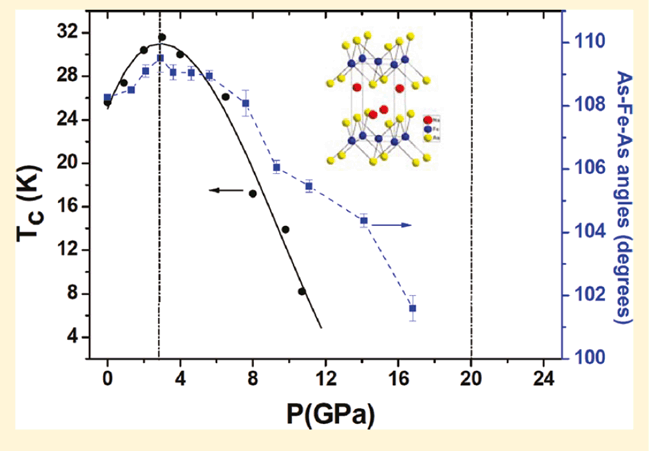Pressure Induced Phase Transition in “111” type Iron Arsenide Superconductors: Correlation with Pressure Enhanced Superconductivity
The discovery of superconductivity in iron based compounds by Prof. Hosono in 2008 received world wide attentions. Following his pioneering “1111” type RFeAs(OF) superconductor system (R: Rare earth element), Germany scientists found the “122” type AeFe2As2 superconductor system (Ae: the Alkaline earth element), while Changqing Jin group at Institute of Physics of Chinese Academy of Sciences found the third system the “111” type AFeAs (A: Alkaline metal) superconductors (Solid State Communications 148, 538 (2008)). Their contributions are recognized internationally as mentioned in Prof. Hosono’s Review Article as well as introduced in a recent Feature Article in Physics Today.
More recently Jin et al found pressure enhanced superconductivity in “111” type NaFeAs. To understand the underlined mechanism, they further investigated structure evolution as function of pressure using synchrotron radiation platform. As early as in 2008 this group reports for the first time the pressure induced phase transition in “1111” system (J. Amer. Chem. Soc. 130, 13828 (2008)). The similar phase transition was subsequently found in “122” system by other groups. They found a pressure induced isostructure phase transition from an ambient pressure tetragonal phase to a collapsed high pressure tetragonal phase in “111” type NaFeAs. By analyzing the crystal structure based on Rietveld refinements they found that the isostructural phase transition is intimately related to the superconductivity transition: the maximum Tc occurs at the phase transition boundary with optimized FeAs coordination geometry. This work sheds light on new superconductor design as well as superconducting mechanism studies of iron based superconductors from the view of crystal structure origination. The work was published recently in J. Am. Chem. Soc. 133, 7892 (2011)
 |
| The evolution of superconducting transition temperature (TC) as function of pressure(right) of “111” type NaFeAs superconductor; A maximum Tc was observed at 3 GPa.(Image by Changqing Jin et al.) |
J. Amer. Chem. Soc. PaperSolid State Communications Paper


